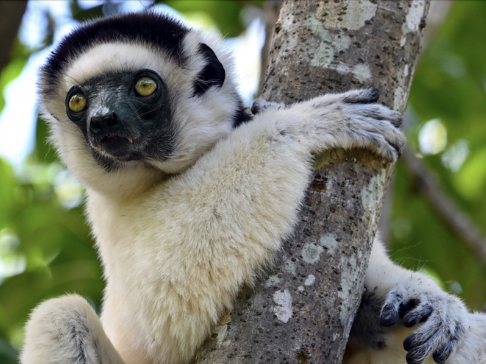Sifaka Lemurs
Animals repeatedly astound us with their athletic ability—whether it be beaked whales who dive to ocean depths of 10,000 feet, godwits who fly 7,600 miles without stopping for food or rest, or peregrine falcons who dive through the air at speeds reaching 200 miles per hour. But some of the most spectacular to observe have to be the high-flying sifaka lemurs of Madagascar who bound effortlessly and gracefully from jagged rock to jagged rock. Considered endangered because of hunting and habitat loss for farming, lemur conservation efforts are increasingly focusing on reforestation and ecotourism.
First a few quick facts:
—There are more than 100 different species of lemurs (although the number in each species can be quite small). In the wild they are only found in the mountains of Madagascar.
—Although related to monkeys and apes, they are a completely different type of primate. The earliest lemurs were the planet’s first primates, and they initially roamed in Africa with the dinosaurs.Southeast Asia.
—Lemurs have a female-dominated society. A female leads her “troop” to food and shelter, and she—rather than the males—gets first access to food and the prime sleeping spots.
—The name “sifaka” comes from the sound of their distinctive alarm call: “shee-fahk.”
—Among the largest lemurs, sifakas weigh up to 13 pounds and can be 2 feet tall, with their tails—which help with balance as they jump—as long as their bodies.
—Remarkably powerful and graceful jumpers, they are said by locals to “fly like angels,” quickly leaping from rocky peak to rocky peak often 30 feet apart and 300 feet high!
A 3-minute BBC video of these incredible creatures
is worth a look.


